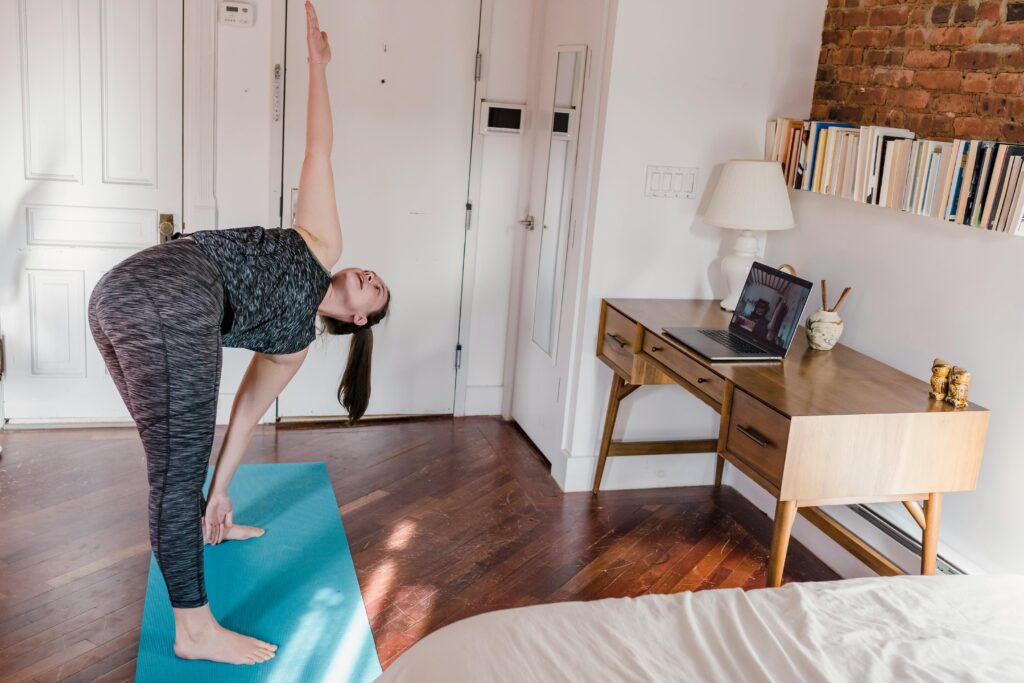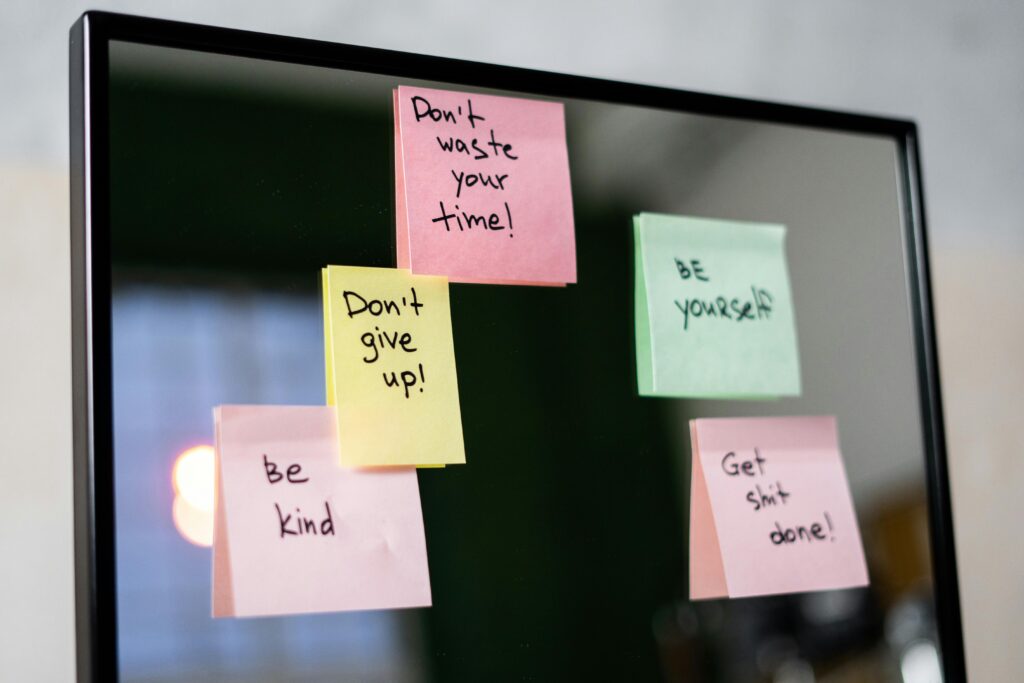In today’s fast-paced world, where the lines between work and personal life seem to blur more each day, finding true balance can feel like chasing a unicorn. We’re constantly juggling conference calls, deadlines, family dinners, and those unexpected life surprises that pop up like confetti. But what if, instead of trying to “balance” a scale that seems eternally tipped, we learned to integrate our work and life in ways that make us more fulfilled, happier, and yes, even more productive?
In this post, we’ll explore actionable work-life integration tips that blend the professional and personal in a fun, engaging way. We’ll break down practical strategies, share quirky anecdotes, and offer insights that might just change the way you approach your daily routine. So, grab your favorite cup of coffee (or tea, or that cheeky afternoon smoothie) and get ready to embrace a life where work and play aren’t adversaries, but teammates.

1. Rethinking the Balance Myth
For decades, society has sold us the idea that work and life exist on opposite ends of a seesaw—if one goes up, the other inevitably comes down. The truth is far more nuanced. Imagine your life as a mosaic, where work, family, hobbies, health, and personal growth all contribute to a beautiful picture. Rather than rigidly separating these areas, integration means allowing them to overlap and support one another.
Consider the story of Maya, a project manager who once felt overwhelmed by her to-do list and her constant need to be “on” both at work and at home. Instead of compartmentalizing her life, Maya started viewing her daily schedule as a patchwork of interconnected moments. Her morning workout energized her for a tough meeting, and a fun family dinner in the evening recharged her creative mind for the next day’s challenges. The result? A happier, more productive Maya who didn’t see her personal passions as a drain on her work energy but as a fuel for it.
Why Integration Works:
- Flexibility: It allows you to adapt to daily changes and unexpected events.
- Energy Flow: Positive experiences in one area can spark enthusiasm in another.
- Personal Fulfillment: You’re less likely to burn out when your life isn’t dictated by a strict schedule.

2. Define Your Priorities (and Let Them Evolve)
The first step in effective work-life integration is knowing what truly matters to you. It might sound cliché, but understanding your core values is the foundation for any successful integration strategy. Write down your top priorities—whether it’s health, family, career growth, or creative pursuits—and be honest about how you currently spend your time versus how you’d like to.
Tips for Defining Priorities:
- Self-Reflection Sessions: Set aside 15 minutes a day for reflection. Ask yourself what part of your day felt most rewarding and why.
- List and Rank: Write down your tasks and responsibilities and rank them by importance. Identify which ones align with your values.
- Flexibility Over Rigidity: Understand that your priorities might shift as your life changes. What’s important now might evolve in the next year or two.
Fun Exercise: Grab a notepad and doodle a pie chart of your ideal day. Allocate slices for work, play, family, and “me time.” This visual can remind you that life isn’t about strict divisions—it’s about a blend that nourishes all parts of you.

3. Set Clear Boundaries—Without Being a Hermit
Even when aiming for integration, boundaries remain essential. Boundaries help you create pockets of time that are sacred—whether it’s a morning meditation session, an uninterrupted work period, or a family dinner without screens. The key is to set these boundaries with flexibility and communicate them clearly.
How to Establish Healthy Boundaries:
- Time Blocking: Use a digital calendar to block out periods for focused work, exercise, and relaxation. When a block is reserved, treat it as non-negotiable.
- Communicate at Work and Home: Let colleagues and family members know your “quiet hours” or times when you’re off the grid.
- Digital Detox: Dedicate parts of your day to unplug. Even if it’s just 30 minutes without your phone, this can work wonders for your mental clarity.
Anecdote: Remember Tom, the digital enthusiast? Tom decided to try “screen-free Sundays.” Initially, he was skeptical, but soon discovered that the unplugged time gave him creative ideas for his job and allowed deeper connections with family. It turned out, less screen time led to more meaningful interactions and a healthier lifestyle.

4. Embrace Flexibility in Your Schedule
The traditional 9-to-5 work schedule isn’t the only way to be productive. Embracing a flexible schedule means acknowledging that your energy levels might vary throughout the day—and that’s perfectly okay. Some days, you might feel like conquering the world before breakfast, while on others, a slow start might be just what you need.
Strategies for Flexibility:
- Identify Your Peak Hours: Track when you’re most alert and schedule your high-concentration tasks during that time.
- Mix It Up: Instead of having one long block of work, consider shorter bursts of productivity interspersed with mini-breaks.
- Blend Work and Life: If possible, allow activities like a walk or a quick workout to break up your work hours. This not only boosts productivity but also injects a bit of fun into your day.
Practical Tip: Experiment with different schedules for a week and note how your productivity and mood shift. Adjust accordingly to create a rhythm that fits your natural energy flow.

5. Create a Workspace That Inspires You
Whether you work from a corporate office or your living room couch, your workspace significantly influences your mood and efficiency. An inviting, organized space can spark creativity and help maintain boundaries between work and personal time.
Creating Your Ideal Workspace:
- Ergonomics Matter: Invest in a comfortable chair, a supportive desk, and proper lighting to reduce physical strain.
- Personal Touches: Add elements that make you smile—a favorite plant, inspirational quotes, or artwork that resonates with you.
- Declutter Regularly: An organized space leads to an organized mind. Spend a few minutes each day tidying up your work area.
Engaging Activity: Try rearranging your workspace every couple of months. A small change, like moving a plant to a new spot or swapping out décor, can renew your energy and bring a fresh perspective to your work.

6. Leverage Technology to Your Advantage
In our digital era, technology can be both a distraction and a powerful ally. When used mindfully, it can help streamline tasks, boost productivity, and even remind you to take a break.
Tech Tools for Work-Life Integration:
- Productivity Apps: Use apps like Trello, Asana, or Notion to keep track of your tasks and goals.
- Calendar Reminders: Set reminders for breaks, meetings, and even moments of mindfulness.
- Mindfulness Apps: Try apps like Headspace or Calm to schedule guided meditations during your day.
Tip: Experiment with “tech-free” intervals during your day. Use productivity apps to plan your schedule but then deliberately step away from screens for brief moments to recharge.

7. Schedule “Me Time” Like an Important Meeting
We often neglect ourselves in the hustle of daily demands. Yet, self-care isn’t a luxury—it’s a necessity. Scheduling “me time” can be as simple as reading a book, enjoying a hobby, or simply doing nothing at all.
Ideas for Meaningful “Me Time”:
- Morning Rituals: Start your day with activities that set a positive tone, like journaling, stretching, or savoring a quiet cup of coffee.
- Evening Wind-Down: Create a calming routine before bed. Turn off screens, read a book, or listen to soothing music.
- Micro-Breaks: Even short breaks of 5–10 minutes can reset your energy and refocus your mind.
Example: Sarah, a marketing executive, began dedicating 10 minutes in the afternoon to a mindfulness exercise. Over time, these mini-breaks evolved into longer, more enriching sessions that enhanced her overall well-being and even improved her work performance.

8. The Power of Saying “No”
Learning to say “no” can be one of the most liberating aspects of work-life integration. It’s not about shutting yourself off from opportunities but rather about prioritizing your energy and focus on what truly matters.
How to Master the Art of “No”:
- Assess Requests: Before agreeing to any new commitment, ask yourself if it aligns with your goals and values.
- Polite Declines: Practice saying no in a way that’s respectful yet firm. For example, “I appreciate the opportunity, but I need to focus on my current projects.”
- Delegate: If possible, delegate tasks that don’t require your unique expertise.
A Fun Perspective: Think of saying “no” as creating space on your personal calendar for things that bring you joy. When you decline an unnecessary commitment, you’re making room for a spontaneous dance break, a cherished hobby, or simply some quiet time to reflect.

9. Integrate Movement and Wellness Throughout Your Day
Regular movement isn’t just for fitness enthusiasts—it’s a crucial component of a balanced lifestyle. Incorporating physical activity into your daily routine can improve concentration, reduce stress, and boost your overall mood.
Ways to Keep Moving:
- Active Breaks: Take short walks, stretch, or do a few yoga poses between work sessions.
- Stand Up Meetings: Instead of long sit-down meetings, try standing or even walking meetings when appropriate.
- Desk Exercises: Simple exercises like seated leg raises or shoulder shrugs can help ease tension during long hours at your desk.
Real-Life Example: Mark, a software developer, started incorporating a 5-minute stretch routine every hour. Not only did he notice improved posture, but his creativity soared, and he felt less fatigued by the end of the day.

10. Cultivate a Positive Mindset
Integrating work and life isn’t only about scheduling and physical activity—it’s also about nurturing a mindset that embraces change and challenges. A positive outlook can transform obstacles into opportunities and help you stay motivated through life’s ups and downs.
Tips for a Positive Mindset:
- Gratitude Journals: Keep a journal where you jot down three things you’re grateful for each day.
- Celebrate Small Wins: Acknowledge your achievements, no matter how minor they may seem.
- Positive Affirmations: Use affirmations to reinforce your strengths and counter self-doubt.
Engaging Thought: Try starting your morning with a simple mantra like, “I am capable and ready for today’s challenges.” Over time, this small habit can shift your entire perspective, making each day feel like a new opportunity rather than a battle to survive.

11. Embrace the Unexpected
Even the best-laid plans can go awry. Work-life integration means learning to adapt gracefully when life throws you a curveball. Whether it’s an urgent project at work or an unexpected family commitment, the key is to maintain a flexible mindset and adjust your plans without self-criticism.
Strategies for Adaptability:
- Plan B (and C): Always have alternative strategies in place. If a planned workout doesn’t happen, consider a quick stretching routine instead.
- Mindful Breathing: When stress hits, take a few moments for deep breathing exercises to recenter your focus.
- Celebrate Imperfection: Recognize that no day will be perfectly balanced. Embrace the chaos and learn from it.
Real-Life Anecdote: Consider Lisa, who once had her carefully planned schedule derailed by an unexpected work crisis. Instead of spiraling into stress, she re-prioritized her tasks and even found time to catch up with a friend over coffee—a decision that ended up boosting her morale and productivity.

12. Learn to Blend Passion with Profession
One of the most exciting aspects of work-life integration is the potential to blend your personal passions with your professional life. Many of us have hobbies and interests that seem completely separate from our jobs. However, integrating these areas can lead to a richer, more satisfying daily experience.
How to Fuse Passion and Profession:
- Side Projects: Dedicate time to personal projects that excite you, whether it’s writing, painting, coding, or gardening.
- Skill Overlap: Identify skills you use in your hobbies that can enhance your work performance. Creativity, problem-solving, and patience are valuable in almost every field.
- Networking: Connect with like-minded professionals who share your passions. This can lead to collaborations that enrich both your personal and professional life.
Example: John, an accountant by day and an amateur photographer by night, started a weekend photo blog that eventually led to freelance opportunities. Not only did this side project enhance his creative skills, but it also provided a refreshing break from the monotony of spreadsheets.

13. Build a Support System That Celebrates You
No one can do it all alone. A strong support system—whether it’s family, friends, or professional mentors—can make all the difference when navigating the challenges of work-life integration. Surround yourself with people who inspire you, hold you accountable, and celebrate your successes.
Tips for Cultivating Your Network:
- Mentors and Coaches: Seek out individuals who have mastered the art of integration. Their insights can be invaluable.
- Peer Groups: Join groups or communities that share your interests, whether online or in-person.
- Family Time: Make time for quality interactions with loved ones. Their encouragement and understanding can help you stay grounded.
Engaging Exercise: Organize a monthly “Balance Brunch” with friends or colleagues where you share tips, stories, and even a few laughs over how you’re managing the daily grind.

14. Reflect and Adjust Regularly
Work-life integration isn’t a one-and-done deal. It’s an ongoing process that requires regular reflection and adjustments. What worked last month might not suit you now, and that’s okay. The secret is to remain adaptable and willing to change course as needed.
Reflection Techniques:
- Weekly Reviews: At the end of each week, take a few minutes to assess what worked well and what didn’t. Celebrate your wins and learn from any setbacks.
- Monthly Goal Setting: Set small, realistic goals for both work and personal life. Revisit these goals regularly and adjust them as circumstances change.
- Feedback Loop: Don’t be afraid to ask for feedback from colleagues, friends, or family members. Their perspectives can help you refine your approach.
Insight: Sometimes, all it takes is a quiet evening with a cup of herbal tea and a reflective journal session to spark ideas for improving your daily routine.

15. Have Fun with It!
At the heart of work-life integration is the idea that life should be enjoyed. It’s about making space for laughter, joy, and the small moments that make every day memorable. So, infuse your schedule with activities that make you smile—be it a dance break in your living room, a spontaneous road trip, or simply a moment of quiet reflection in a park.
Creative Ways to Add Fun:
- Theme Days: Create fun themes for your days or weeks. For instance, “Wellness Wednesdays” can be dedicated to self-care activities, while “Funday Fridays” might include social activities or creative projects.
- Micro-Adventures: Look for small, local adventures that you can embark on. A short walk in a new neighborhood or exploring a local café can provide a delightful change of pace.
- Celebrate Life’s Moments: Whether it’s a big project milestone or simply getting through a hectic week, take time to celebrate—even if it’s with a mini dance party or a special treat.
Final Anecdote: Remember that time when Jamie, an overworked lawyer, decided to take a spontaneous break to watch a comedy show? That unexpected detour not only lightened her mood but also gave her fresh insights for tackling a tough case the next day. It’s a perfect reminder that a little fun can lead to big breakthroughs.

16. Bringing It All Together
Achieving true work-life integration is like conducting a symphony where every instrument—work, family, health, hobbies, and self-care—plays in harmony. There’s no one-size-fits-all blueprint, but by being intentional with your time, embracing flexibility, and nurturing a positive mindset, you can create a balanced life that feels both productive and profoundly fulfilling.
Recap of Key Tips:
- Rethink Balance: See your life as a mosaic where every piece contributes to the whole.
- Define Priorities: Know what matters most and let those priorities guide your decisions.
- Set Boundaries: Protect your time without shutting out spontaneity.
- Embrace Flexibility: Adapt your schedule to fit your natural energy and needs.
- Create an Inspiring Workspace: Design an environment that boosts creativity and focus.
- Leverage Technology: Use tools that streamline tasks and remind you to take breaks.
- Schedule “Me Time”: Prioritize self-care as if it were a crucial meeting.
- Learn to Say “No”: Create space for what truly matters by politely declining distractions.
- Move Regularly: Incorporate physical activity throughout your day.
- Cultivate Positivity: Build a mindset that celebrates both small wins and big breakthroughs.
- Embrace the Unexpected: Adapt and flow with life’s surprises.
- Integrate Passion and Profession: Let your hobbies enrich your work and vice versa.
- Build a Support System: Surround yourself with people who uplift and encourage you.
- Reflect and Adjust: Regularly assess your routine and be willing to make changes.
- Have Fun: Infuse your day with moments of joy and spontaneity.
17. Final Thoughts: Your Journey to Integration
The quest for work-life integration is a journey, not a destination. It’s about continuously fine-tuning your approach to fit the ever-changing rhythms of life. There will be days when the scales tip a bit more toward work and others when personal time takes center stage. And that’s perfectly okay.
Every moment is an opportunity to recalibrate and reframe how you view your day. Perhaps tomorrow will bring a surprise challenge at work or a long-awaited catch-up with a friend. Embrace these moments with an open heart and a flexible plan. Remember, the goal isn’t to achieve perfection but to create a life where every part—be it a hectic meeting or a quiet evening stroll—adds value to your overall well-being.
In the end, work-life integration is about celebrating the beautiful, messy, and wonderfully unpredictable nature of life. So, dare to mix your work with your passions, let creativity lead you through your day, and never lose sight of the fun that life has to offer.
Here’s to a life that’s as vibrant and dynamic as you are. Embrace the integration, laugh at the unexpected detours, and savor every moment along the way.
18. Actionable Steps to Get Started Today
- List Your Priorities: Write down what matters most in both your work and personal life.
- Plan Your Day: Use a digital calendar or planner to block out time for focused work and relaxation.
- Create a Designated Space: Whether it’s a home office or a quiet corner, set up a workspace that inspires you.
- Set Your Boundaries: Communicate your schedule to family and colleagues, and enforce your “do not disturb” periods.
- Experiment with Flexibility: Try different work patterns and note what makes you feel most energized.
- Schedule Fun Activities: Plan a weekly “fun hour”—a time dedicated solely to something you love.
- Reflect Daily: End your day with a few minutes of reflection. What went well? What could be improved?
- Stay Open to Change: Regularly review and adjust your routine to suit your evolving needs.
Taking these steps can serve as the foundation for a more integrated, fulfilling lifestyle where every part of your day contributes to your overall happiness and success.
19. Conclusion
Finding balance in today’s world doesn’t mean compartmentalizing every aspect of your life. Instead, it means weaving together work, passion, and personal time into a tapestry that reflects who you are. With these work-life integration tips, you have a toolkit to create a more harmonious routine that not only drives professional success but also nurtures your personal well-being.
Remember, the journey to integration is personal and unique. Experiment with these ideas, tweak them to fit your lifestyle, and above all, enjoy the ride. Life is too short to be spent in a constant tug-of-war between responsibilities and desires—integrate, adapt, and thrive.
Now that you’re armed with practical tips and a renewed perspective, it’s time to make a change. Start small, stay consistent, and let each day be a testament to the beautiful blend of work and life that you are capable of creating.
Thank you for reading! I hope these insights inspire you to find a more balanced, joyful way to navigate your busy life. Remember, every step you take towards integration is a step toward a happier, healthier you.



